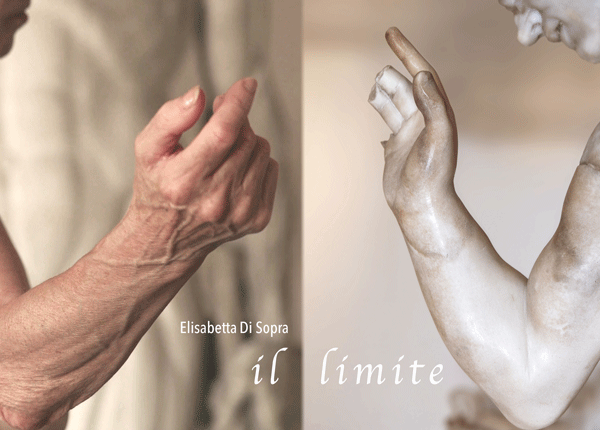
Elisabetta Di Sopra – Il Limite
15 July - 9 October 2021
Video installation by Elisabetta Di Sopra
“The limit” is understood as line and drawing: but “the limit” is above all the necessary element that our visual perception must use to grasp the forms. Three monitors show in motion the naked body of the model, portrayed in a classroom of the Academy of Fine Arts in Venice: she is a living image next to the artworks of the past, immobile but alive in the imagination and emotions of the visitors who observe them.
The artist returns to the places of his training in a new stage of research aimed at capturing the minimal and, at the same time, extraordinary aspects of everyday life. Thus, the classroom where the teaching of Artistic Anatomy takes place becomes the place of staging for a lesson animated only by the slow movements of a posing model, the so-called ‘living model’: she stands out from other ‘non-living’ models, represented by plaster casts of masterpieces, placed in those same spaces, imitating which one was educated in the arts.
Director's Word
«Through the metaphor of art, Di Sopra reminds us of the human condition. If in the video, we notice the slight movement, the vibrations of the model, her placement in the Archaeological Museum of Venice urges us to observe the immobility of the images of the sculptures. The necessary premise of those statues – whether originals or copies – is that there were precisely models in flesh and blood with living lines that consumed their time and that artists fixed them in marble. How elegant and light is this image, offered to us by the artist, so deep is the theme. After all, “every limit has patience,” said Totò: true, and we tend to forget about it.»
Daniele Ferrara, Direttore regionale Musei Veneto
«For those internal dynamics typical of art, thanks to which nothing can be considered ‘past,’ it is precisely from the distance that the process of rapprochement begins. The observation skills of the videomaker highlight the postures assumed by the model during an anatomy lesson. The plurality of points of view is returned by the use of multiple screens, which make up a sort of technological triptych. Just as it was not just any place, where Di Sopra shot the work, even less is any place that hosts her work. […] The work exhibited in the rooms of the Archaeological Museum has to do with time, the slow time of the subject portrayed by the artist, and the extended, dilated time from which the classic works in the rooms come. Times that run parallel for a moment, coexisting in front of the visitor’s eyes.»
Riccardo Caldura, Direttore dell’Accademia di Belle Arti di Venezia




